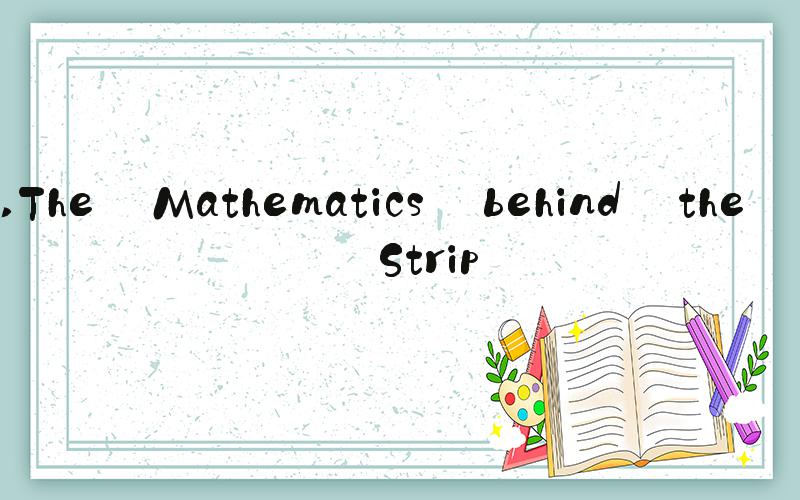 Mobius: Exploring the Fascinating World of Infinity
Mobius: Exploring the Fascinating World of InfinityThe Mobius strip, named after German mathematician August Ferdinand M?bius, is a fascinating object in the world of math and geometry. It is a one-sided surface with only one boundary component. What makes it even more intriguing is that it is a non-orientable surface, which means that it cannot be distinguished between its front and its back.
The M?bius strip can be constructed easily by taking a strip of paper, giving it a half-twist, and then gluing the ends together. The resulting shape has some fascinating properties, including the fact that it has only one surface and one edge. If you were to drag your finger along the surface of a M?bius strip, you would eventually end up back where you started, having traced both sides of the shape simultaneously.
The Mathematics behind the Mobius StripThe Mobius strip is not just a interesting shape, it has some deep mathematical properties. One of the most surprising of these properties is that a M?bius strip has only one side. You can test this by drawing a line down the center of a M?bius strip. You will find that you can color the entire surface of the strip with just one color, which would be impossible for a traditional two-sided surface such as a sphere or a cylinder.
An interesting mathematical property of the M?bius strip is that it is a non-orientable surface. This means that it cannot be given an orientation, or a consistent set of directions, at every point. You can see this by trying to draw an arrow on the surface of the strip that always points in the same direction. As you move around the strip, the arrow will appear to flip direction without ever actually turning around.
Applications of the Mobius StripWhile the M?bius strip may seem like just a mathematical curiosity, it has some practical applications as well. One of the most well-known applications of the M?bius strip is in conveyor belts. Mobius belts are used in manufacturing and material handling to evenly distribute wear and tear on the surface of the belt, which can increase its lifespan.
The M?bius strip has also found use in architecture, often used in buildings and sculptures to create interesting and visually striking designs. The shape of the M?bius strip allows it to seamlessly connect different surfaces, creating a continuous, flowing form that draws the eye and captures the imagination.
The Mobius Strip as a SymbolThe M?bius strip has become something of a symbol in popular culture, representing the idea of infinity, non-duality, and the interconnectedness of all things. It is often used as a design element in logos, album covers, and other visual media, and has even inspired works of literature and poetry.
One of the most famous literary examples of the M?bius strip is in the book "House of Leaves" by Mark Z. Danielewski, in which the shape is used as a metaphor for the labyrinthine structure of the book itself. Another example comes from the poetry of the late Mary Oliver, who wrote of the M?bius strip as a reminder of the infinite possibilities of life and the interconnectedness of the natural world.
ConclusionThe M?bius strip is a fascinating and endlessly intriguing object, both in the world of mathematics and beyond. Its unique properties have captured the imaginations of artists, architects, and designers for decades, and its symbolism has touched the hearts and minds of people all over the world. Whether we are exploring the infinite possibilities of the natural world, creating beautiful designs and works of art, or simply appreciating the wonders of mathematics, the Mobius strip serves as a reminder of the limitless potential of the world around us.
